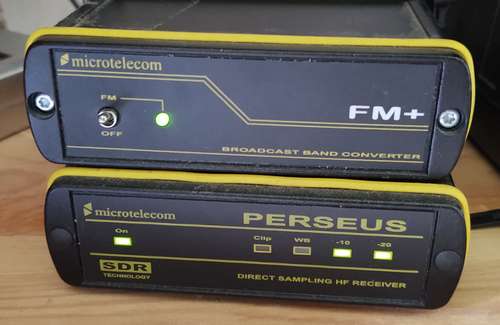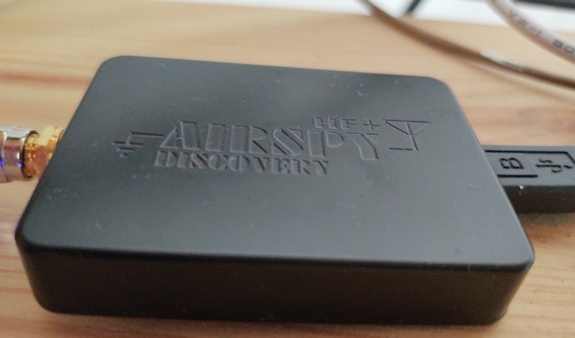Comparing the Airspy HF+ Discovery with Perseus FM+


| | Range HF | Range VHF | max sample rate | max Bandwith | released | software | original price
|
|---|
| Perseus / FM+ | is a combination of the Perseus SDR HF receiver with a converter for FM | 0 - 40 MHz | 87.5 - 108 MHz | 2 Mbps | 1.6 MHz | 2008/2010 | V5 / FM+ | 900 + 300 €
|
|---|
| Airspy Discovery HF+ | is special edition of the Airspy USB dongle, based on RTL-SDR chip but with hardware improved by magnitudes | 0 - 31 MHz | 63 - 275 MHz | 0.912 Mbps | 0.725 MHz | 2019 | SDR Sharp v1.0.0.1811 | 170 €
|
|---|
Findings VHF
The Airspy HF+ is clearly superior to Perseus FM+, especially when handling strong signal situations
| Situation | in Detail | Perseus FM+ | Airspy Discovery
|
|---|
| FM strong signals | 5 signals 70-80 dB above noise floor (-5 dBµV)
| strong intermodulations (25 dBµV) on 25% of all channels (about every 0.4 MHz)
noise floor rises by 15 dB
ATT does not help
| only one intermodulation on 86 MHz detected 3 dB above noise floor
sensitivity remains the same
many clear signals unreachable by the Perseus
|
|---|
| FMDX | a few weak signals | detected but distorted | clear decoding, excellent sensitivity
some hardware-gemerated spurious carrier-like signals
|
|---|
The weak MilSat signals (using just the FM-Antenna without directional gain) around 260 MHz are a good reference for sensitivity. The Airspy Discovery is about 3 dB better than Airspy Mini and the RTL-SDR with T820.
The Perseus FM+ is still an excellent receiver, superior to the AOR AR 5000 in strong signal situations and equal to the Onkyo T4970. But the Airspy Discovery HF+ just a level above.
RDS decoding
As one might expect, SDR# detects better just beacuse signals are clearer. But it gets even better if you use the external RDS Spy software. Signals can be routed by using the MPX output plugin and the VAC (Virtual Audio Cable). Unfortunately there is no MPX output option for the Perseus FM+. In many situations, the Airspy Discovery has the PI within seconds, while the Perseus cannot catch anything in minutes.
Software
The big advantage of the Airspy is that the SDR# software is constantly being improved and equipped with additional plugins. One exciting development is the co-Channel rejection for FM and AM. Perseus and SDR# start stuttering after some tuning. Switching between sample rates will start a fluent output again. Unfortunately SDR# is less stable than the Perseus software in these situations. The Perseus GUI offers precise dBµV levels for signal levels while the SDR# signal diagnostics plugin is a bit tricky and slow. But there is hope for better: SDR# is in continous development while the Perseus software has not been updated for years.
Ranges
It is not possible to tune the Airspy Discovery outside the defined ranges. Between 275 and 280 MHz, processing halts for 1 second after each tuning movement. Officially the range is 60 - 260 MHz. Practically it is 63 - 275 MHz. The FM+ converter can also be used for 80 - 120 MHz if you use the Perseus (HF) software without WFM. The Airspy produces an annoying phantom signal 5 KHz above the tuned frequency 15 dB above the noise level but only in 768/912 kbps bandwidths and above 110 MHz.
Wishlist for the Airspy Discovery
- 50 MHz capability
- more bandwidth for DAB+ decoding
Peer-Axel Kroeske, May 2021
Radiovibrations.com ->
test reports

